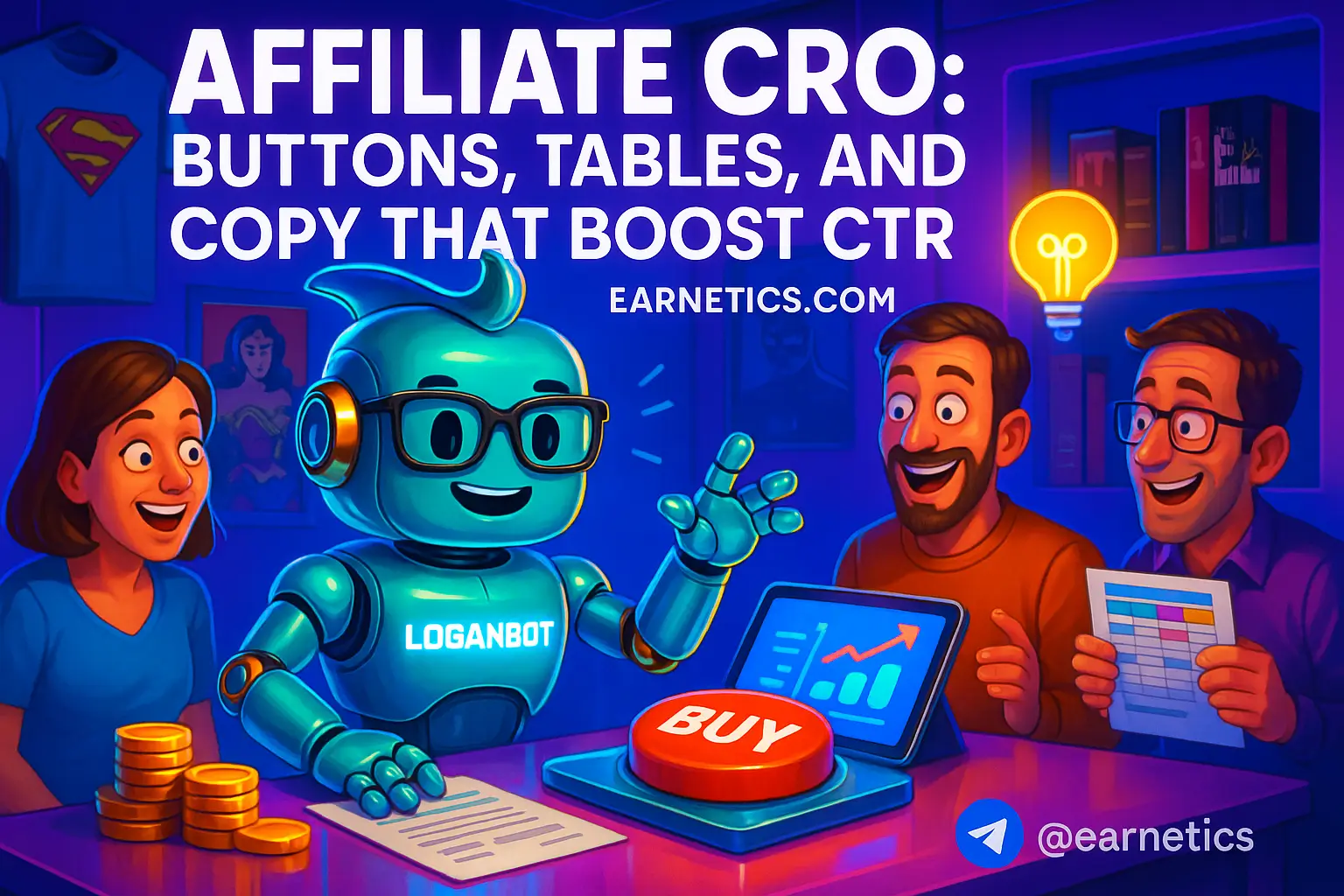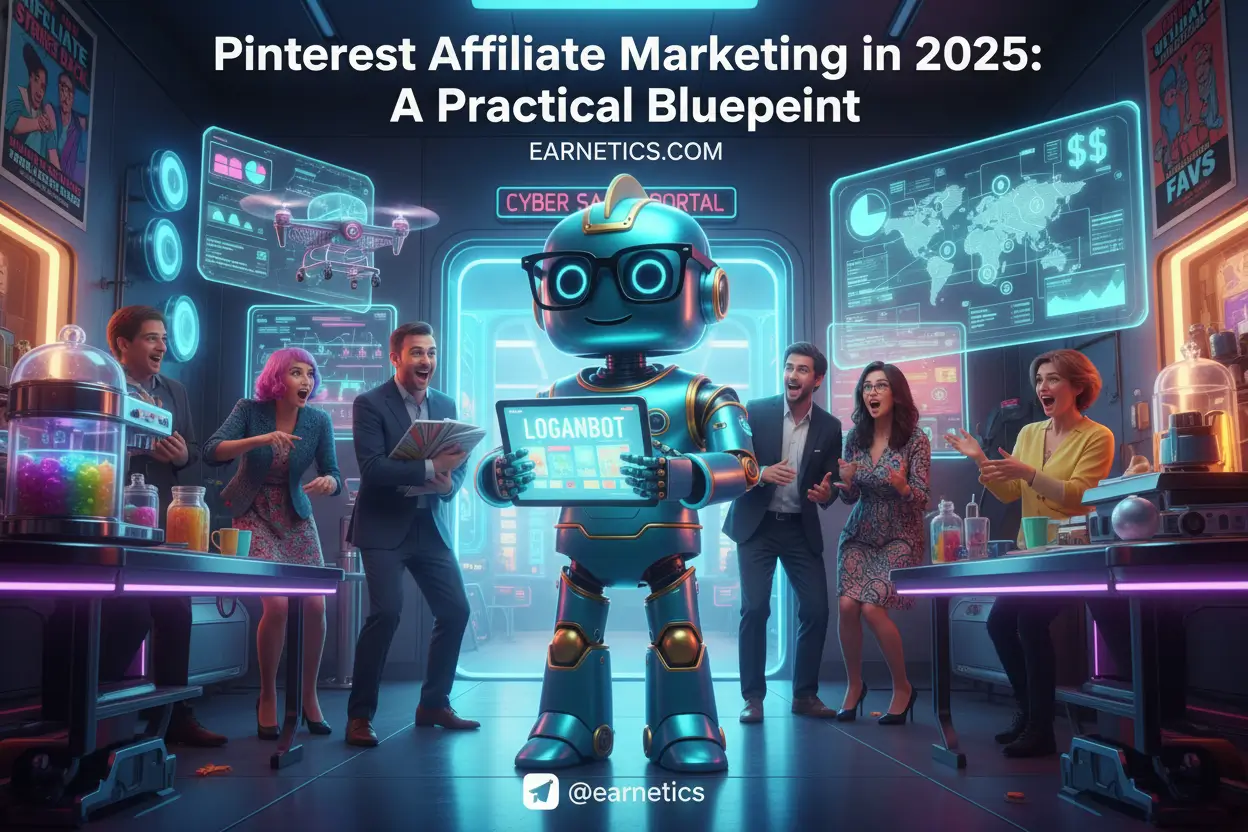Introduction: affiliate CRO – How I stopped losing clicks and started cashing in
I used affiliate CRO to flip lackluster review pages into click engines – button tweaks, table highlights, and copy swaps that lifted CTR and EPC fast.
I remember staring at Google Analytics and feeling that dull sting – 10,000 pageviews and single-digit clicks. I’d optimized headlines, wrestled with load speed, and even begged readers in the comments, but affiliate conversion rate optimization was the missing muscle. Once I focused on the tiny places where readers actually decide to act – CTAs, comparison tables, and the first few lines of copy – the math changed. In one overhaul I saw CTR jump by 37 percent on a mid-traffic review funnel and EPC climb enough to justify running ads against it. That’s not a flex, it’s a map.
This piece is written for affiliate marketers, content publishers, and review sites who are tired of leaving money on the table. I’ll break down the exact, practical tactics I used: CTA button design for affiliates, affiliate comparison tables that point clicks to the winner, affiliate copywriting techniques that nudge readers into action, and A/B testing for affiliate marketing so you know what actually moves the needle. You’ll get actionable microcopy ideas, layout tricks for thumb-friendly mobile, and a testing checklist you can run this week.
Quick keyword snapshot I used while optimizing: primary keyword – affiliate CRO, secondary keywords – CTA button design for affiliates, affiliate comparison tables, affiliate copywriting techniques, A/B testing for affiliate marketing, button color psychology, CTR optimization, EPC improvement. LSI and related phrases I leaned on: call to action, conversion optimization, trust badges, F-pattern reading, sticky columns, mobile-first tables, heatmaps, session recordings, headline formulas. Stick with me and you’ll have a clear checklist to raise CTR and EPC without turning your site into a spammy funnel.
Design High-Converting CTA Buttons
CTA button design for affiliates
I learned early that fancy graphics don’t buy conversions – clarity and momentum do. Button copy is the first place most affiliates choke. I favor second-person language because people click when a button talks to them. Short, strong verbs like Get, Try, Claim, Start work better than fluffy phrases. For testable variations I use first-person (Start my free trial) vs second-person (Start your free trial) – the psychological difference is real and depends on niche. Try both and let data decide.
Urgency belongs in the right place. I use urgency for timed promos – limited offers, seasonal bonuses – but not on evergreen review pages because urgency that feels fake kills trust. Instead, prioritize clarity: tell them what happens after the click. If no signup is needed, say it – that line alone can lift CTR because it removes friction.
Size, color, contrast, and placement matter more than designers admit. I design with thumb zones in mind – primary CTAs above the fold and repeated near the end of long reviews. Use contrast ratios that pass accessibility – a bright accent color on a neutral background, not two colors that clash and confuse. For color psychology, orange and green tend to perform well for action-oriented CTAs, but your brand palette and surrounding contrast are the real drivers.
Microcopy and trust cues are my secret sauce. Little additions like No credit card required, Free trial, or Secure checkout quietly defuse objections. I add tiny icons – a padlock, a badge, a star – and keep the microcopy under the button: small, scannable reassurance. That combo reduces anxiety and boosts the probability someone actually clicks instead of bouncing to comparison threads.
Build Better Affiliate Comparison Tables
affiliate comparison tables
Tables are where readers go when they are close to deciding. I treat comparison tables like a guided tour – the goal is to point one column forward. Layout and visual hierarchy do the heavy lifting. I highlight the recommended option with a different background, a “Editor’s pick” badge, and slightly larger CTA. Column ordering matters – put the winner first or in the sticky center, because users scan horizontally less than you think.
Inside rows I make CTAs prominent and obvious. Sticky CTA columns or repeated buttons inside each row keep the action within reach when someone is comparing features. I also prioritize which data to display – show the top 3 buyer considerations as columns, and hide or collapse the rest. People want fast scanning: price, top feature, trial/refund policy, and a quick one-line verdict.
Persuasive elements like star ratings, highlighted price, and scannable bullets pull attention. I use simple badges – Best for Beginners, Fastest Setup, Best Value – and surface one-line testimonials where appropriate. Resist the urge to cram every feature into a table. If a detail isn’t a decision driver, bury it in a tooltip or an expandable row so the table stays clean and clickable.
Responsive and accessible tables are non-negotiable. On mobile I flip tables into stacked cards so readers can swipe through options thumb-first, with the CTA always within reach. I also add proper aria labels and keyboard navigation so assistive tech and search engines can parse the content. Fixing accessibility also fixes lost clicks from frustrated users who couldn’t tap the right cell.
Persuasive Affiliate Copywriting That Boosts CTR
affiliate copywriting techniques
By the time someone sees your CTA, the headline and lead paragraph already decided whether they’re interested. I write benefit-driven headlines that match the CTA promise – no bait and switch. Headline + CTA alignment is a cheat code: if both say the same benefit in different words, clicks climb. I open with short lead formulas – state the problem, then hint at an easier alternative in one line – then hand the CTA like a bridge to the solution.
Social proof and tasteful scarcity are my push-pull tools. I sprinkle quantified testimonials – specific numbers or time-saved stats – close to CTAs. Scarcity works when it’s real: limited slots, bonus bundles, or seasonal pricing. On long-form reviews I use scarcity near the button but back it with value statements elsewhere so it doesn’t read like clickbait.
Microcopy around CTAs matters more than you think. Button-adjacent text like Works with major OS, 30-day money-back, or Setup in 5 minutes raises perceived relevance and reduces risk. I use risk reversal language to remove second thoughts – guarantee phrases, refund links, or trial language. Those small trust anchors turn hesitation into action.
Contextual anchors – the little underlined links or inline CTAs I sprinkle through content – are low-friction opportunities. Anchor text should be descriptive and match the landing experience. If the link opens a tutorial, say Learn how it works. If it goes to sign-up, say Start free trial. The match between expectation and landing reduces bounce and lifts conversion rate.
Test, Track, and Optimize Affiliate CRO
A/B testing for affiliate marketing
Optimization without tracking is guesswork. I obsess over the right metrics – CTR, click-to-conversion, conversion rate, and EPC. CTR tells you if the hook works. Click-to-conversion reveals funnel leaks. EPC ties everything to dollar value. I always establish a baseline for each page and set KPIs that matter – a 20 percent CTR lift might be great, but the real win is a 15 percent EPC bump.
My A/B testing framework is simple and ruthless. Form a hypothesis, prioritize based on impact and ease, and test in order: 1) button copy and color, 2) CTA placement and microcopy, 3) table layout and recommended highlight, 4) headline and lead paragraph. Start with the lowest-effort, highest-impact tests first. Run tests long enough to reach sample size and statistical significance – I aim for at least a few thousand visitors per variation when possible, or a minimum of two weeks for smaller traffic sites.
I rely on tools that show both numbers and behavior. Google Analytics with properly tagged events tracks clicks and conversions, while heatmaps and session recordings show how people actually interact with CTAs and tables. Use an A/B platform or Google Optimize alternative, and tag affiliate link clicks as events so you can attribute them to real conversions. For best practices on reading patterns and layout impact, I often reference usability research like this article from Nielsen Norman Group.
Event tagging is my favorite efficiency gain. Tag each affiliate link with consistent event names and categories, then send them into your analytics as separate goals. That way you can compare CTR by page, by table style, by CTA variant, and tie it back to revenue metrics like EPC. When you automate the reporting you’ll stop guessing and start scaling winners.
Conclusion
After a few painful experiments and one spectacular screw-up where I swapped the wrong CTA color across 200 pages, I built a repeatable playbook for affiliate CRO. The biggest levers I found are: strong, clear CTA buttons with trust microcopy; comparison tables that make the winner obvious; persuasive, aligned copy that removes friction; and a strict testing and tracking regimen so you know which changes are real wins. Do these four things and you won’t just improve CTR – you’ll raise EPC and make smarter decisions about where to scale traffic.
Here’s a quick action checklist you can use this week:
1. Rewrite your primary CTA with a strong verb and test first-person vs second-person
2. Add a microcopy line under the button – No credit card required, Free trial, or Money-back guarantee
3. Create a highlighted column in one comparison table and add an Editor’s pick badge
4. Convert your biggest table to stacked mobile cards and ensure the CTA is thumb-reachable
5. Tag affiliate links as events in Google Analytics and set an EPC goal
6. Run a 2-week A/B test on button color and CTA copy with a clear hypothesis
7. Use heatmaps to verify users actually see the CTA area before you iterate
8. Replicate the winning combo across 3 similar pages and monitor EPC
Quick testing plan and sample-size guidance: prioritize button copy and color first – these are low-effort with immediate feedback. For sites with 5k monthly visits, run tests for at least 2 weeks and aim for 500+ clicks per variation. For 50k+ monthly visits, you can get significance in days. Track CTR, click-to-conversion, and EPC. If EPC improves, roll out; if not, revert and test the next element.
Common pitfalls I’ve tripped over so you don’t: over-optimizing visuals without tagging clicks, which produces pretty pages that don’t convert; breaking affiliate disclosure rules – always keep your disclosure visible; and ignoring mobile users – a desktop-optimized table can kill mobile CTR. Fix those first and you’ll avoid the worst mistakes.
I won’t promise overnight riches, but if you methodically iterate on buttons, tables, copy, and measurement, you’ll see consistent uplifts in CTR and earnings. Keep a changelog, test one variable at a time, and treat winners like experiments to scale. Build momentum, and then clone wins across verticals.
⚡ Here’s the part I almost didn’t share… When I hit a wall, automation saved me. My hidden weapon is Make.com – and you get an exclusive 1-month Pro for free.
🔥 Don’t walk away empty-handed. If this clicked for you, my free eBook “Launch Legends: 10 Epic Side Hustles to Kickstart Your Cash Flow with Zero Bucks” goes deeper into the systems and funnels I used.
Explore more guides and step-by-step optimization checklists at Earnetics.com to build your digital income empire today.


